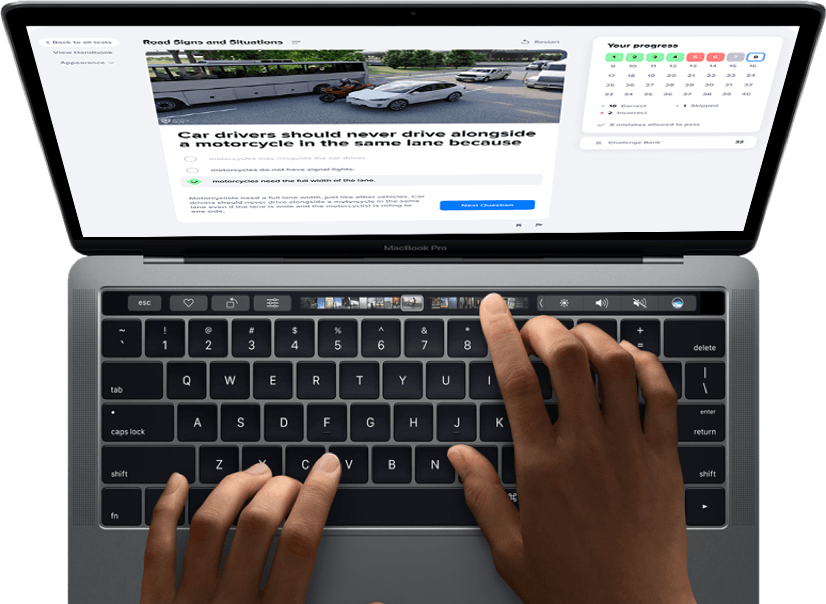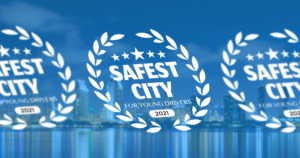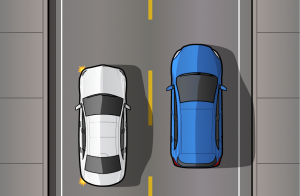The most common hazard area on the road is the intersection. Intersections are widely varied and can be confusing to experienced and inexperienced drivers alike. Whether you are driving in a big city or a small town, your path is destined to cross with someone else’s. Let’s face it, intersections can be stressful driving situations because there is often a considerable amount of activity going on: an array of navigational signs, turning lanes, merging lanes, traffic signals, a multitude of other drivers who are in just as big of a hurry as you are. The most helpful method of learning how to safely maneuver through intersections is to recognize the different types and the common rules associated with them. Below is a list of popular types of intersections and some helpful tips for getting through them and getting back on your way.
How to Keep Yourself and Others Safe at Intersections
- 1
A four-way
A four-way intersection is the most common type and involves the crossing of two roadways. Although the roads can approach each other at any angle at a four-way intersection, they often appear perpendicular, especially in metropolitan areas where the roads are designed in a grid-like fashion. Four-way intersections are either controlled by stop signs or a traffic signal. At a four-way intersection controlled by a traffic signal, only proceed when you are presented with a green light. Only turn left on a green light when there is no approaching traffic. At a four-way intersection controlled by a stop sign, vehicles gain right of way in the order they reach the intersection. Here is a short guide that cover important rules of a four-way intersection including blinking lights, power outage and other vital situations.
- 2
A T-junction
A T-junction is an intersection at which a minor roadway meets a major roadway. These are also common types of intersections that you will often encounter. The minor roadway at a T-intersection is almost always controlled by a stop sign, whereas the vehicles on the major roadway continue driving without having to stop. The most important thing to remember about T-intersections is that the vehicles on the major roadway always have right of way. The vehicle that is planning to turn right or left onto the major roadways must come to a complete stop and look both directions before pulling out onto the major roadway.
- 3
A Y-intersection
A Y-intersection has three sections, like a T-junction, but one roadway meets another roadway of equal size, sometimes appearing as if the two roadways join to form one road. There are two types of Y-intersections. At the first, there will be a stop sign on both roads a short distance from the actual junction. All traffic is required to stop and the vehicle that arrives at their respective stop sign first proceeds first. At the second type of Y-intersection, the drivers on one road proceed uninhibited while the drivers on the second road must come to a complete stop and look in both directions for incoming traffic before pulling out onto the other road.
- 4
A traffic circle
A traffic circle or roundabout is often used to control an intersection of four or more roadways. As you approach a roundabout, yield to oncoming traffic then turn right so that you are driving around the circle in a counterclockwise fashion. Turn right again to exit the roundabout when you reach the roadway you want to continue on. It is important not to stop while driving in a roundabout because pile-ups can occur quickly. The following animated guide will help you learn everything you need to know about roundabouts.
- 5
A “fork”
A “fork” in the road is an actual type of intersection where two roadways meet. One lane of the main road divides into two with one mini-lane connecting with a joining road and the other mini-lane continuing along the road’s original path. Typically, there is a median area separating these two sections of the main roadway at a fork.
It’s wise to learn in advance which of the mini-lanes you need to take![fork in the road]()
- 6
Turning lanes
Turning lanes appear at intersections that have a heavy amount of traffic. These lanes are designated for drivers who desire to turn left at an intersection and are usually controlled by a traffic light. Turning lanes are label with a painted arrow on the pavement. An arrow will also appear on the traffic light controlling the turning lane. If you position your vehicle within a turning lane at an intersection, you must follow through with the turn.
- 7
Controlled or uncontrolled
Intersections are often described as controlled or uncontrolled. Controlled intersections are most common and refer to those that employ stop signs or traffic signals. Uncontrolled intersections are found primarily in rural areas with little traffic. Motorists are often warned of upcoming uncontrolled intersections by warning signs; however, no traffic signal or stop sign is present. If you encounter an uncontrolled intersection, proceed slowly and carefully. Use common sense and chronological order when determining right of way. Below you can find more tips about controlled and uncontrolled intersections.
- 8
Pedestrian crosswalk
Intersections are common areas for pedestrian crosswalks, particularly in urban areas. Make sure that you watch out for and yield right of way to pedestrians crossing the street when you turn right at an intersection.
The number one rule to staying safe when you encounter an intersection is to slow down. Intersections inherently have higher concentrations of traffic because two or more roadways are travelling through one small space. Reduce your speed, follow common right of way rules, pay attention to traffic signals, watch out for pedestrians, and safely carry on with your commute.






